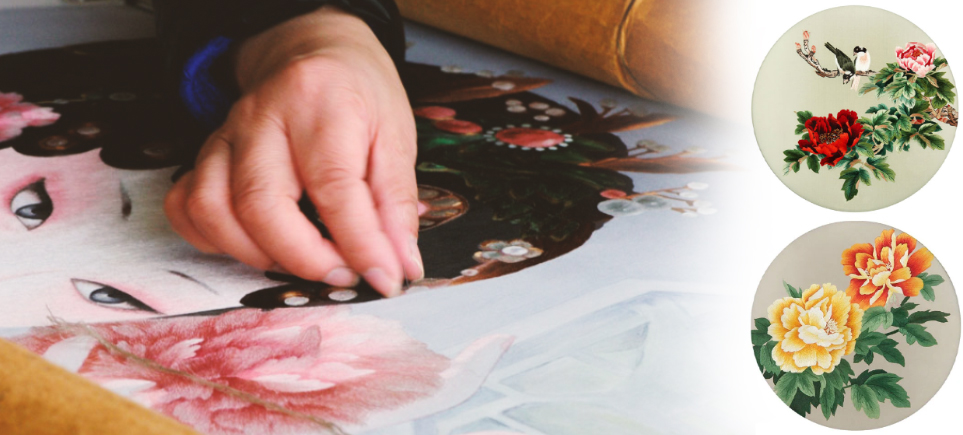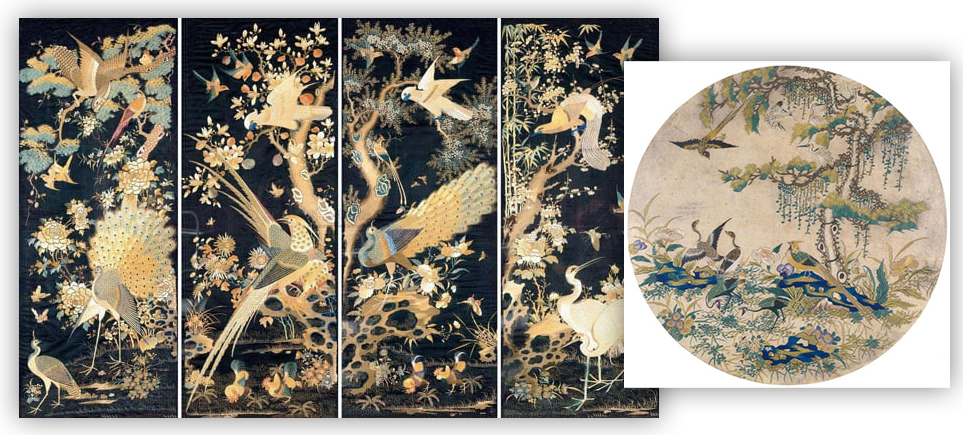
Chinese embroidery stands as one of the traditional crafts deeply rooted in Chinese culture. Girls skillfully craft intricate designs and figures on cloth using needles threaded with vibrant strands, showcasing their mastery in this age-old handicraft. China boasts a rich history of needlework, where young Chinese females in both cities and towns traditionally learned embroidery from a tender age, a skill highly valued in their marital lives.
Initially, local women embraced embroidery as a means to embellish their clothing, bags, and bedclothes. With prevalent themes of flora and fauna, Chinese needlework has evolved into a national art form, renowned for its vibrant and lifelike designs. The extensive silk production in China has significantly contributed to the development of embroidery and brocade skills.
Chinese embroidery symbolizes China itself, offering a harmonious blend of fine arts, aesthetic prowess, and practical functionality. Whether you find yourself in a well-known tourist destination or a remote minority region in China, you can discover an array of embroidered items, from basic fabric to quilt covers, pillowcases, coats, shoes, scarves, and cup mats. These make for unique and culturally rich gifts for family and friends.
Initially, local women embraced embroidery as a means to embellish their clothing, bags, and bedclothes. With prevalent themes of flora and fauna, Chinese needlework has evolved into a national art form, renowned for its vibrant and lifelike designs. The extensive silk production in China has significantly contributed to the development of embroidery and brocade skills.
Chinese embroidery symbolizes China itself, offering a harmonious blend of fine arts, aesthetic prowess, and practical functionality. Whether you find yourself in a well-known tourist destination or a remote minority region in China, you can discover an array of embroidered items, from basic fabric to quilt covers, pillowcases, coats, shoes, scarves, and cup mats. These make for unique and culturally rich gifts for family and friends.
Techniques Used To Create Chinese Embroidery

Chinese needlework, an enduring art form dating back thousands of years, involves using a needle and thread to intricately sew patterns into fabric. Renowned for its vivid hues, delicate precision, and intricate designs, this art form often portrays natural landscapes or ancient Chinese myths. Various techniques are employed, including:
Shu Embroidery
Also known as “Sichuan embroidery,” Shu embroidery is a traditional Chinese skill involving the use of natural silk to embroider flower patterns on silk or other fabrics. With its origins in Chengdu, Sichuan, and the Western Sichuan plain needlework, Shu embroidery is one of the four most well-known embroidery styles in China, boasting an extensive history.

Xiang Embroidery
Referred to as “Hunan needlework,” Xiang embroidery encompasses needlework goods with specific Hunan Chu cultural traits, primarily centered around Changsha, Hunan. This folk craft, created by diligent and knowledgeable Han workers in Hunan Province, utilizes silk thread embroidery to produce realistic designs, earning it a positive reputation.

Yue Embroidery
Known for handmade silk thread embroidery, Yue embroidery is produced in Chaozhou and Guangzhou. It comprises Chaozhou embroidery and Guangxiu embroidery, two of the four well-known embroidery styles in China. Yue embroidery features various themes and produces a range of products, including mirror screens, hanging curtains, banners, quilt covers, pillow covers, bed lintels, shawls, headscarves, embroidered clothing, shoes, and headgear.

Jing Embroidery
Also known as palace embroidery, Jing embroidery is a historic form of Han needlework associated with goods produced in Beijing. Thriving during the Ming and Qing dynasties, it found its place in clothes, court decorations, fine materials, technology, and fashion. Jing embroidery crystallizes the wisdom and artistic creativity of the ancient Han working class.

The techniques employed in Chinese embroidery are highly specialized, demanding significant skill and patience. Often created by hand, a single piece can take several months or even years to complete. Chinese embroidery stands as a stunning art form, treasured for centuries, with intricate designs, vibrant colors, and delicate details showcasing the skill and dedication of its artists.




